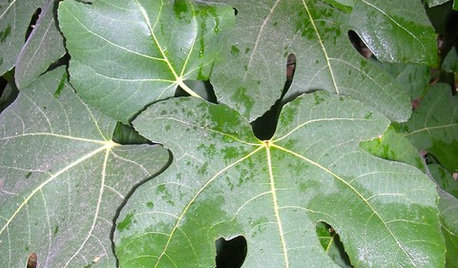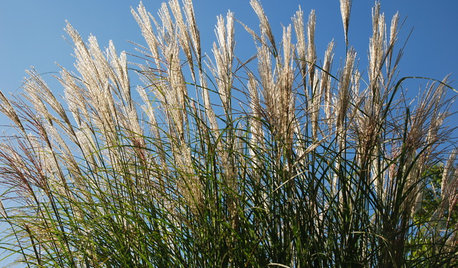Fiddle leaf fig root help
Margaret Oh
last year
Related Stories

HOUSEPLANTSPlay Up Some Fiddleleaf Figs for a Lively Indoor Tune
Strike a dramatic chord in a minimalist scene or a country note in a rustic setting — fiddleleaf fig plants harmonize with any style
Full Story
HOUSEPLANTSSee How Fiddleleaf Fig Trees Can Liven Up Your Decor
The tropical houseplant with big green leaves adds a cheerful and striking design element to rooms
Full Story
GARDENING GUIDESGreat Design Plant: Common Fig
A full form and delicious fruits make this Middle Eastern tree a favorite in gardens around the world
Full Story
LIFEConsider Avoiding These Plants to Help Keep Your Garden Fire-Safe
Plants that accumulate dead material, are high in oil or have low moisture content in leaves put some homes at risk
Full Story
BEDROOMSA Little Design Help Goes a Long Way in This Bedroom
A Kentucky couple bring in a designer to polish up a bedroom redesign project they had started
Full Story
CONTAINER GARDENSConsider These 10 Pet-Safe Houseplants
Help keep cats and dogs healthy with the right selection of indoor plants
Full Story
CONTAINER GARDENSContainer Garden Basics: How and When to Water Potted Plants
Confused about soil moisture, the best time to water and what watering device to use? This guide can help
Full Story
GARDENING GUIDESHow to Keep Your Citrus Trees Well Fed and Healthy
Ripe for some citrus fertilizer know-how? This mini guide will help your lemon, orange and grapefruit trees flourish
Full Story
BEFORE AND AFTERSHardworking Study and Guest Room Inspired by Africa
A designer helps a Dallas couple use the organic textures, sumptuous textiles, gold touches and dark colors they love
Full Story
DECORATING GUIDESHow to Use Full-Scale Decor to Make a Small Space Feel Bigger
With a less-is-more approach, even oversize furnishings can help a compact area seem roomier
Full Story






Margaret OhOriginal Author
Tiffany, purpleinopp Z8b Opp, AL
Related Professionals
Baltimore Landscape Architects & Landscape Designers · Middle River Landscape Architects & Landscape Designers · Edmond Landscape Contractors · Cupertino Landscape Contractors · Midland Landscape Contractors · Oviedo Landscape Contractors · Parker Landscape Contractors · Rockville Landscape Contractors · Royal Oak Landscape Contractors · Santa Ana Landscape Contractors · Northlake Landscape Contractors · Quartz Hill Landscape Contractors · North Hills Landscape Contractors · Clinton Township Interior Designers & Decorators · Channahon Handymaniochroma
tapla (mid-Michigan, USDA z5b-6a)